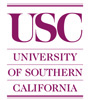 How USC pioneered higher education’s use of managed services.
How USC pioneered higher education’s use of managed services.
The University of Southern California enjoys a reputation as one of the world’s leading private research universities. Located in the heart of Los Angeles, USC educates approximately 33,500 students each year and employs 18,500 people, including 3,200 full-time faculty members, 6,800 student workers, and an additional staff of 8,500.
USC’s contingent labor requirements span a broad and diverse set of departments, with positions ranging from high-level engineers to custodians. Due to the seasonality of a higher education institution, their contingent labor needs swing dramatically from month to month. In December of 2008, the university was contracting with more than 55 staffing firms to meet their contingent labor demands. Subsequently, the human resources department made a strategic decision to outsource their contingent labor management to a third party. While best-in-class businesses have been using managed services models for some time, USC became the first higher education organization in the United States to do so.
USC engaged Guidant Group, a managed services and vendor management software provider, to take over the primary responsibilities of sourcing, managing, and invoicing their contingent labor processes while also maintaining diversity requirements. Guidant Group’s primary goals were to enable USC to better track their contingent labor spend and reduce the legal risks associated with engaging contingent workers.
Solution
Though USC’s needs would present an array of challenges, the difficulties were not unlike those of Guidant Group’s existing clients. Guidant Group’s vendor management system, Staff Enabler, was the primary software tool for meeting USC’s business objectives. The technology could capture and track a wide variety of data including spending, headcount, and suppliers. It provided streamlined invoicing for all suppliers, and its reporting capabilities could provide a new level of insight for every component of contingent labor management. The most critical feature of the VMS was the user interface that was both intuitive and easy to learn. Ultimately, the simplicity of the VMS was a major key in the successful implementation and adoption of the program.
Implementation and Adoption
The USC staff was particularly concerned with the adoption of the program by their long tenured staff. Because of the highly decentralized nature of a higher education institution and their affinity toward sticking with what they know, USC’s procurement group asked Guidant Group to provide best practices for change management and driving adoption.
Guidant Group worked with USC’s program sponsorship to develop a solution that was consistent with the look and feel of USC’s existing technology interfaces for communication and change management. They collaborated extensively with USC’s IT team to develop the web interface and branded the Guidant Group program as “Trojan Temps powered by Guidant Group.” It is accessed by USC end users through the campus intranet.
The customization of the VMS appearance provides the end users with the feel of working with a colleague rather than an outsourced provider, thus reinforcing program adoption. Additionally, the entire Guidant Group account team uses client-hosted corporate email accounts to further their assimilation into the USC environment.
During the final 30 days of the program’s implementation, Guidant Group held weekly on-campus seminars to provide end users as well as USC’s executive sponsor and program initiative teams with an orientation to the new system.
Guidant Group successfully implemented the USC program in just more than 60 days. Since the program’s inception, USC has been able to achieve 100 percent adoption levels among end users. That is to say, there has been no maverick spending outside of the program to date.
Program Results
The success of the managed services program can be measured in a variety of metrics: 17 percent in annual savings, risk mitigation, visibility into market rates, and greater controls over hiring processes. All of the stakeholders—human resources, procurement, hiring managers, legal, finance, and suppliers—are operating more efficiently and cost effectively.
In April of 2009, USC added two hospitals to its balance sheet. The managed services program that is currently in place will adapt to meet USC’s evolving contingent labor needs.
Trojan Temps
Tags: HRO Today Forum APAC, HRO Today Forum Europe, HRO Today Forum North America, HRO Today Global, HRO Today STA, RPO, Talent Acquisition














